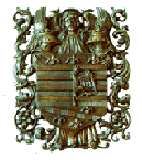
Short History of Kosice
Following the period of economic flourishing and relative peace in the 14th and 15th centuries, Košice in the 16th and 17th centuries experienced troubled times as a result first of the Turkish invasion threat, then the religious conflicts of the Reformation and Counter-Reformation, and later the series of aristocratic rebellions against the Habsburgs. Despite repeated armed clashes, during this time the Jesuits were able to make Košice a seat of learning with its own university and secondary schools.
The confusion of the incipient Modern Age gave way to peace and progressive growth in the 18th and 19th centuries. The new Baroque architecture flourished here, followed by neo-Classicism and Romanticism; the aristocracy moved into the town, promoting the arts, theatre and social life. By the end of the 19th century Košice had developed into one of the most important industrial cities in Greater Hungary. In 1918 Košice became part of the first Czechoslovak Republic, and although the wartime Hungarian occupation from 1938 to 1945 brought economic and demographic decline, at the end of the Second World War Košice for a while became the capital of the re-established Czechoslovakia. From the 1950’s onwards the city experienced furious growth, accelerated mainly by the building of the East Slovakian Steelworks. In the space of one generation there was a five-fold increase in the city’s population, and a twenty-fold expansion in its built-up area.
- History of Košice
- Coat of Arms
- Historical Monuments
- Košice at the Beginning of the 20th Century
- List of the City Officials in Košice from 1307
- Archaeological museum
- The Košice City Archives
- Wandering in Kosice - a regularly conducted guided walking tour about the history and presence of Kosice
- Cemeteries in Košice:
Public cemetery
Military cemetery
Jewish cemetery
Cemetery of St. Rosalie
Calvary cemetery
Crematorium in Košice











